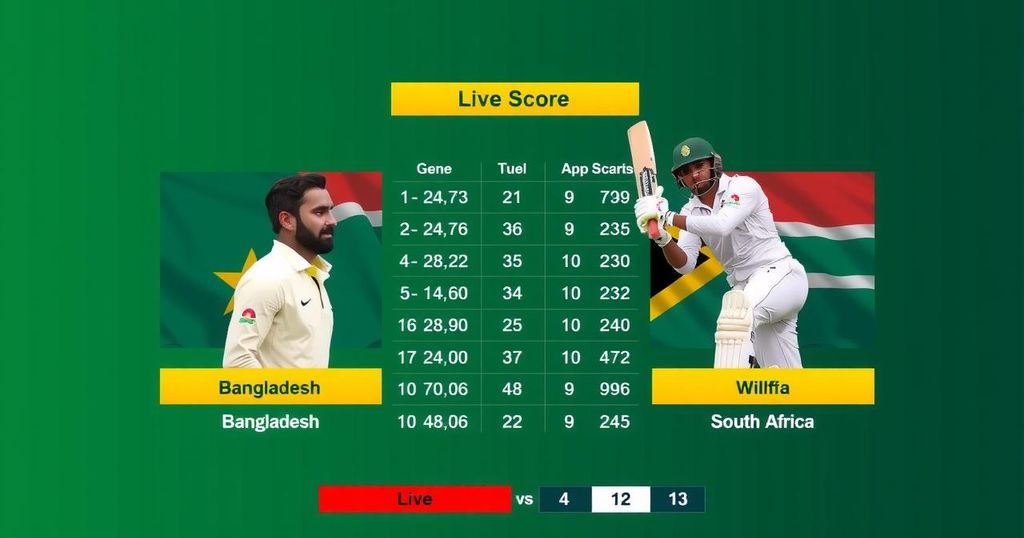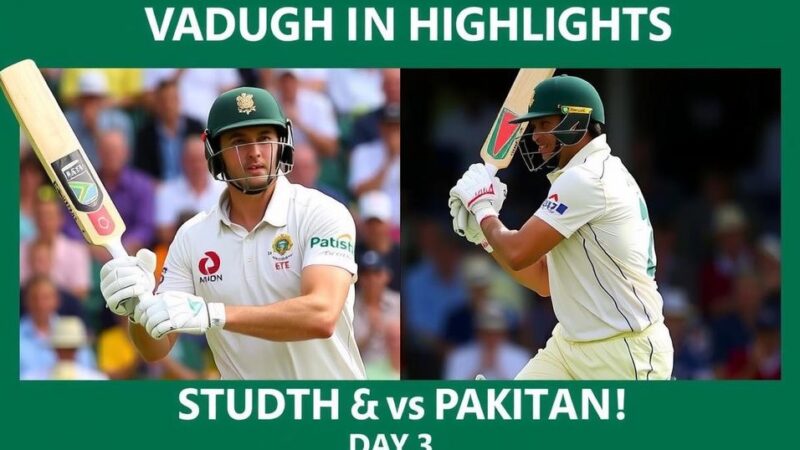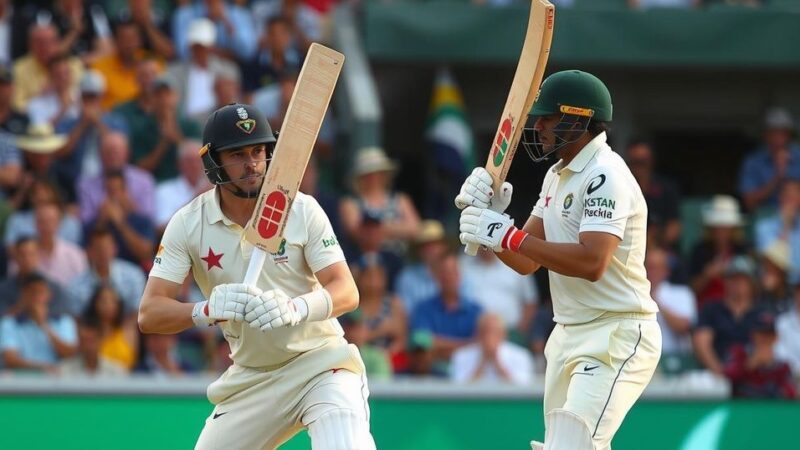Bangladesh won the toss and opted to bat against South Africa in the 1st Test in Dhaka. The match marks Bangladesh’s return to international cricket following significant political changes. South Africa’s Kagiso Rabada’s early strike against Mushfiqur Rahim highlighted their bowling dominance early in the match. Bangladesh seeks to rebuild their innings to regain momentum.
On the first day of the 1st Test match between Bangladesh and South Africa, Bangladesh’s captain Najmul Hossain Shanto won the toss and elected to bat first in Dhaka. This event marks the return of international cricket to Bangladesh following a significant political shift after a student-led revolution that ousted autocratic leader Sheikh Hasina in August. In a notable change, Bangladesh included uncapped left-arm spinner Hasan Murad to fill the void left by retired all-rounder Shakib Al Hasan, whose return was hindered by security concerns in the region. The confirmed playing elevens are as follows: Bangladesh: Shadman Islam, Mahmudul Hasan Joy, Najmul Hossain Shanto (captain), Mominul Haque, Mushfiqur Rahim, Litton Das (wicketkeeper), Mehidy Hasan Miraz, Jaker Ali, Nayeem Hasan, Taijul Islam, Hasan Mahmud. South Africa: Tony de Zorzi, Aiden Markram (captain), Tristan Stubbs, David Bedingham, Ryan Rickelton, Matthew Breetzke, Kyle Verreynne (wicketkeeper), Wiaan Mulder, Keshav Maharaj, Kagiso Rabada, Dane Piedt. The early moments of the match saw Kagiso Rabada from South Africa making a significant impact by dismissing Mushfiqur Rahim, delivering a splendid delivery that uprooted the stumps. This performance added to the pressure on Bangladesh’s batting line-up, who had hoped for a solid start after their decision to bat first. South Africa capitalized on the conditions, showcasing their bowling prowess effectively. As the match progressed, Bangladesh struggled to gain momentum, needing to establish a solid partnership to regain control. The South African bowlers, particularly Rabada, demonstrated excellent discipline and skill. The formatted statistics indicate a challenging endeavor for Bangladesh, as they navigated a tough start in their innings.
This cricket match is significant not only in sports terms but also reflects a pivotal moment in Bangladesh’s political landscape. The recent political changes could influence various sectors, including sports, and affect players’ decisions regarding participation in international matches. The inclusion of Hasan Murad as an uncapped player underscores Bangladesh’s strategy to cultivate new talent while responding to challenges posed by previous players like Shakib Al Hasan. Furthermore, the current two-match series serves as an opportunity for both teams to gauge their capabilities against each other in the wake of previous encounters.
In conclusion, the first day of the 1st Test match between Bangladesh and South Africa showcased a decisive start from South Africa, who capitalized on the opportunity to bowl first. Bangladesh’s choice to bat initially did not yield the desired results, necessitating an urgent need for partnerships to fortify their standing in the game. The political backdrop following recent events adds another layer of intrigue to this series, influencing the dynamics of cricket in Bangladesh and the broader implications on international sports engagements. The match continues to unfold, with both teams looking to seize control as the series progresses.
Original Source: sports.ndtv.com






